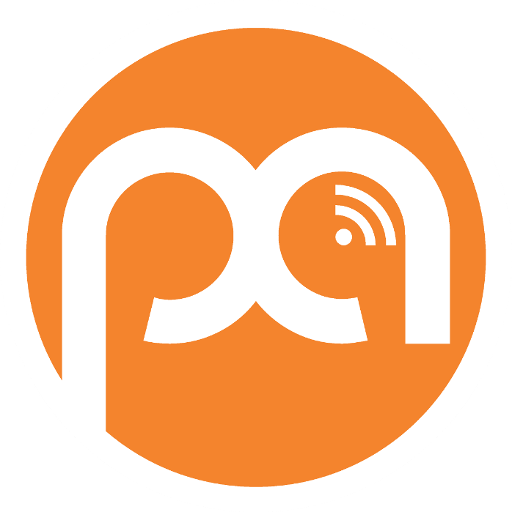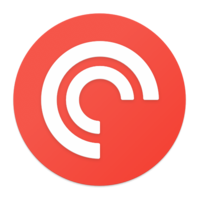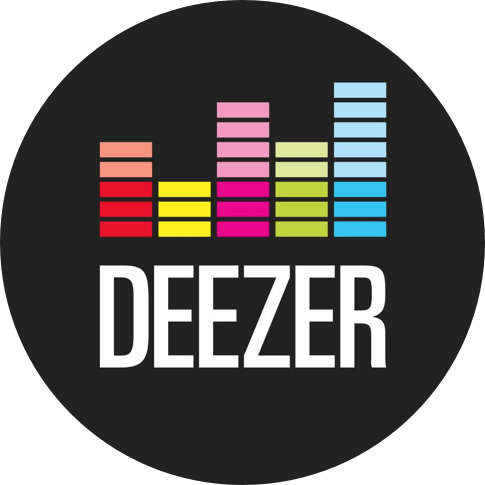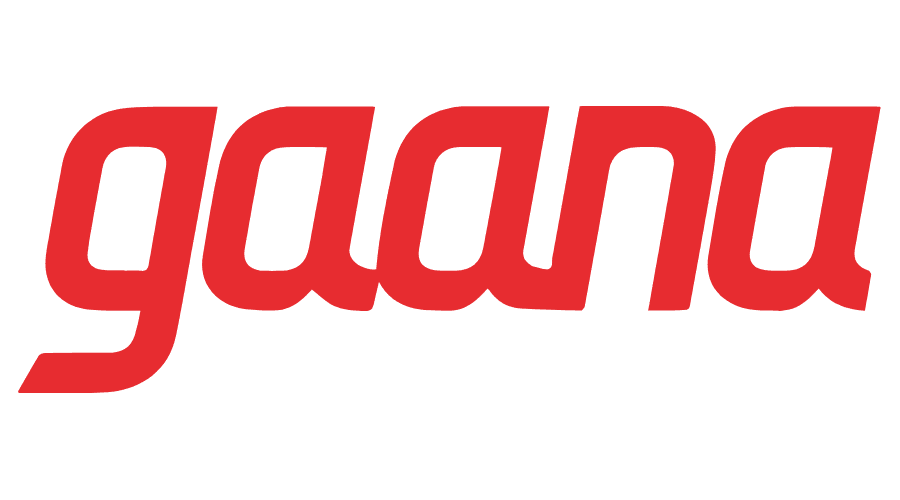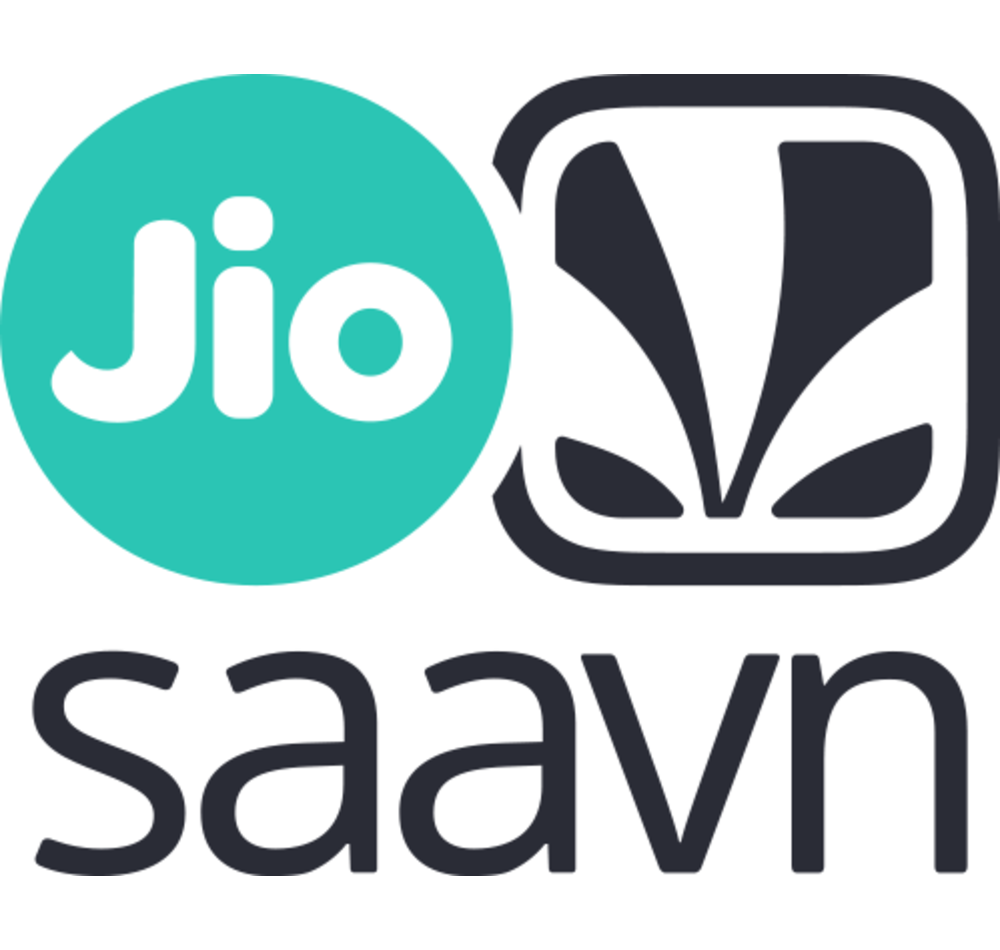Building AI-Driven Support in Just Three Weeks
with Adrian Pradzioch
The Business Simplicity Podcast hosted by Chris Parker
Episode #215 published on 12 June 2025
In this episode, Chris Parker speaks with Adrian Pradzioch, Customer Operations Automation Lead at Suit Supply, about his rapid and impressive implementation of a generative AI customer support bot. They explore the motivations behind automation, how it was scoped and launched in under a month, and the real business results it’s already delivering. Adrian shares not only the tools used but also the mindset and decision-making frameworks that helped simplify complexity and accelerate execution.
Adrian brings a unique blend of practicality and creative problem-solving. From starting as a support agent at a scooter startup to becoming a leader in automation, his path reflects a hands-on, systems-thinking approach to operational efficiency. His early drive to “avoid repetitive work” evolved into a strategic capability that now enables international organizations to radically improve customer service without scaling costs.
Listeners will take away actionable insights into how to assess readiness for AI, how to select and connect platforms like ADA and N8N, and how to continuously refine bots through conversation analysis. Adrian’s reflections also include the emotional intelligence needed to lead automation thoughtfully, emphasizing iteration, empathy, and care. This matters now more than ever as enterprises seek to simplify omnichannel experiences under pressure.
The conversation is especially relevant for leaders navigating customer experience at scale, or those driving digital transformation programs with lean teams. Adrian’s approach highlights how automation and generative AI can enhance rather than dilute the human touch—when designed with intention.
Mentioned in this episode:
About the Guest
Adrian Pradzioch is the Customer Operations Automation Lead at Suit Supply, where he is responsible for implementing and scaling generative AI customer support systems. With a background that began in customer service, Adrian brings firsthand empathy for customer needs and a builder’s mentality for simplifying internal operations. He was invited on the show to share his recent work automating support across channels in just three weeks, and to offer practical insights into making AI tools work for real-world teams.
Contact Details
Linkedin: Adrian Pradzioch
Website: https://www.suitsupply.com
Key Discussion Points
- What motivated Adrian to start automating support?: A desire to reduce repetitive work evolved into a strategic capability to enhance speed and experience.
- How fast can you launch a generative AI bot?: With the right experience and tools, Suit Supply launched theirs in three weeks.
- What kinds of support tickets are best suited for automation?: High-frequency, low-complexity issues like order status, returns, and payment issues.
- What platforms were used and why?: ADA for customer interaction, N8N for back-end integration, and Salesforce as the core data platform.
- How do you choose what to automate first?: Start with high-volume inquiries that can be reliably answered through structured data and clear rules.
- How do you ensure brand alignment in an automated experience?: Language tone and knowledge base content matter, but speed and clarity are often more important to the customer.
- What are the biggest lessons from early implementation?: You will always face unexpected errors; solving them quickly and documenting as you go is key.
- What’s next in this space?: Department-specific bots that handle operational tasks internally and externally are on the rise.
Transcript
(00:00) Hello, this is Chris Parker and I just had a conversation with Adrien Prajakah on the business simplicity podcast and he is automating customer support at the international brand suit supply. We talk about why they did it, how they implemented it in three weeks and the the initial results they had as well as some tips and tricks uh that he has for people who are considering to automate customer engagement.
(00:23) So Adrian, why would this be really valuable for someone to listen to it? Thank you Chris. Hi everyone. Well, if you’re looking to understand how to expand your laziness towards ambitious and generative AI related work, make sure not to miss our conversation, the Business Simplicity podcast, where we learn about strategies and tactics to succeed through simplicity with your host Chris Parker.
(00:50) And welcome back to the Business Simplicity podcast. This is Chris Parker and I’m talking to Adrian Project who is the um exactly the title I’m not quite sure but he’s doing work with Suit Supply and Suit Supply is a really cool company here in the Netherlands that maybe we’ll talk a little bit about why that’s so cool.
(01:10) uh but he’s the customer operations automation lead and like me he is a member of the Gen AI circle and that is a really an international community of doers and thinkers mostly doers in the genai space and he posted recently that he made a full converged fully automated agentic AI customer support bot for for suit supply in three weeks and of Of course, that made me perk up because this is a space that I’m very busy with as the chief experience officer with Tacful and we do these kind of things. So, I was like, “Oh, wow.
(01:46) That’s super impressive.” So, Adrian, thank you so much for for jumping on and um I’m really looking forward to the conversation to maybe pick each other’s brains on on how did you do that? You know, why did you do that? Um what what what have you seen so far like in in support metrics? Where do we think it’s going? Um yeah, but but before that maybe just uh originally from Poland, but maybe just give a little bit of a introduction of yourself and how did you find yourself at Suit Supply working on just this really amazing stuff. Sure. Uh
(02:20) hi everyone. Thanks for the invite Chris. That was a pretty pretty cool introduction. Um from my side, yes, I’m currently working at Supply. I’m leading the automation projects for customer operations. So initially I’m focusing on deploying the support bot um for all our customers to you know take out the workload from our agents and to speed up uh all the KPIs that the supply is uh is reporting on especially my department.
(02:47) Um the question was how did I end up here? Well it’s a it’s it’s a long story. I’ll make it a short story. Uh five years ago I joined the micromobility startup DOT. So it’s basically you’re jumping on those scooters. you pay on your app and you drive paper like you you you pay per amount of minutes you wrote and I started as an agent so I was responding to all those uh tickets the related to problems that the customer that the users had right so I cannot end my ride for example there’s a big building and the GPS doesn’t work I cannot end my
(03:18) ride so initially I started just responding to those tickets and uh following certain procedures that were in customer support but I thought that was a bit repetitive you So at the time I just needed money and I had this job and um I think couple of months after I found myself just looking for ways to avoid work.
(03:43) Um so what what a great motivation. Yeah. Yeah. I think at at the time the motivation to to to automate was related to my laziness. I was just I wanted to work less. Now luckily it morphed into something slightly more ambitious for myself that makes me feel a bit better about my work. But since then I’m just automating things for customer operations.
(04:04) Uh at the time it was we started with uh the NL right so the scenario based bot and then um it evolved into genai how uh I guess jumping to how I joined suit supply. I worked for three years at dot with my manager and then she switched to suit supply and we really we really wanted to work together again. um basically doing the same thing.
(04:31) So automating customer support by using generative AI tools and combining them with uh low code tools. Yeah. Um cuz actually if you just connect the bot to your knowledge base, you know, out of the box, it should automate between 10 20 and 30% of of tickets. uh at dot at some point uh before I left we managed to automate 70% of all customer support tickets with the goal being 90 um and here the goal is let’s say similar um no cool I I I’m I was am a suit customer um and I remember maybe I’m dating myself when it first opened and
(05:13) it was it was a bit revolutionary because there was at that time suit was coming in with um um standard, you know, more more standard um like high-end like like high quality but but these standard fitted shirts and suits and things. And it was also in in creative places like like places where you would not normally expect it like off the freeway uh and make it very convenient for people to buy their suits and then and there was a way of getting basically bespoke suits for for less.
(05:44) Is that still what suit supply is all about? Yeah, definitely. I I actually just to be honest the first S supply experience was a month ago uh where I went shopping okay for some for some clothes and uh I found it quite cool. I mean I was waiting for my appointment uh there was a bartender they were offering coffee, tea, beers and a couple of drinks and you were just waiting for for the person to help you out with your shopping right and then everyone is just really helpful trying to for you to match whatever you’re looking for giving advice. Uh so
(06:15) that was pretty new to me. I know that the experience varies depend on the city. There’s 150 shops uh currently uh around the world. The one in USA has a swimming pool or I heard where you just you know you wait for your appointment and you can chill in the swimming pool and then you jump into a suit. Wow. Right.
(06:37) So that’s that’s cool, right? That that gives you an feeling of like okay that’s that’s interesting. I would like to see this how this experience goes and then have a suit um or any other accessories. So I I quite like it. I like the concept. No. Cool. And and um and based on that, so that’s a bit where the customer experience is all about.
(06:53) Um I did not know it was in the States or with the pool. Um very curious about that. But what kind of service support questions like what was the problem you were trying to solve with this? Like what was the problem you were trying to solve with, you know, that that demanded automation? Yeah. So um I guess depending on the actually you’re trying to solve for all the problems in in reality but then depending on the complexity and uh the amount of requests coming in you’re trying to focus on the ones that are uh like low effort and
(07:26) high impact. That’s that’s my main uh focus uh for now. So the question that is coming the most often is what are related to my orders uh where’s my order um and the status of the order the status of alterations for example if you buy a suit you can you know shorten the sleeves or you can shorten anything else and then it takes time for the tailoring for the tailor to actually do this alteration and you want to know because you’re in a rush.
(07:52) So we’re looking to solve those initially. Uh but then there are others like um creating return labels like uh scheduling appointments and uh maybe understanding why your payment failed. Um so for for each of those we’re trying to give the answer as quick as possible because otherwise you know the the human can respond but it takes some time. Yeah.
(08:15) So the idea is not only to automate those tickets but actually to give the responses as quickly as possible with as much context as possible and then at some point the personalization will come. Um but initially we’re focusing on on trying to fix those answers. And how did the process go? Like is this something you recommended or were you hired to do this? Like like some companies say well we don’t want bots.
(08:40) We want to keep it a very human experience. So it sounds like there was a strategic decision to go this route. Is it were you involved in that or what was what was the background to get a a a green light for this kind of initiative? Yeah, that was what I was hired for actually. I was hired to to uh implement the self-service uh generative AI generative AI bot uh for customer support but also to automate customer operations basically wherever the the agent has struggle with for example I don’t know copy pasting a lot of information between three different tabs
(09:10) I’m also looking to automate those things but initially we focus on self-service uh the idea was mostly presented by my manager this is a strategic decision to u improve all the possible KPIs but also to save money um on operations. No. Nice. And and you got this live in three weeks and and then we’ll talk about iterating and improving and you know what the next steps are.
(09:36) But um what did that plan look like? So it’s like you were hired and then they say get this done and you’re like okay well you know let let me do let me get this done in three weeks. Something that you know maybe could have taken three years a while ago. um uh what did that plan look like? How did you select the software and and what happened in those three weeks? Yeah, so the software was selected based on our previous experience.
(10:00) So together with my manager, her name is Randy, we work with Ada in the past three years at DOT. Um and you know day by day we were making mistakes and finding new solutions and solving solving issues. So if you take into account the context um this was the best possible option because for the next couple of years year we are able to work with the tool that we already know and implement the changes based on um the idea of high impact and low effort.
(10:28) Yeah. Um so mostly based on experience we work with ADA for the last three years also starting with the NLO uh technology. Um and uh well I mentioned 3 weeks but I mean it took me six days to make a presentation for my interview. So okay and based on this presentation I was just basically following the road map that they that I was asked um to do for my interview.
(10:55) So in the interview you presented a plan a road map. Yes. To get it done and then they said okay you’re hired and get it done. So yes yes that’s that’s a simple summary of that. Yes. Exactly. Uh so you know for example the the most of the questions that are coming are related to orders. So we know that we we should we should focus on that.
(11:16) The channel divide this is kind of actually even email phone uh WhatsApp web store social media so on. So it’s also about it’s it’s kind of about deploying it to different channels simultaneously working on automations that that help the customers. So there’s quite some some work to be done but it’s it’s quite fun. So, um, ADA, and I’ll put this in the show notes, ada.
(11:42) cx is a customer experience, um, platform that that I believe also allows handoff to the live agent. Must have the analytics behind it and you integrated this, I understood, with your Salesforce, but you also brought in N8N and you couldn’t have had too much experience on N8N because it’s pretty new, I guess, or maybe you’ve been using very, very early versions of it.
(12:02) So, but you decided to use the agentic um framework N8N the automation framework in addition to this like what was the what was in your mind when you said okay we need this new player in the stack to do certain things yeah we we actually started automating like this with other tools so I think for auto my automation journey started with Zapier then I switched to make.
(12:27) com then I switched to retool uh and in the end the retool was a bit uh it was limiting me at the time due to costs. The workflows were quite expensive. So um then I started working with a freelancing agency like 9 10 months ago and they suggested the self-hosted version of NAN. So at the time the retool bill was like €3,000 for for a startup.
(12:54) Um and then we went down to 50. Uh so since like 9 10 months ago I’m working with an end and it only made sense to continue doing it uh doing it here because of the amount of the possible complexity that you can add to the flows the way it works and ADA allows you to connect with APIs right and whatever you do between this connection the N8 allows you to to do really well so ADA is hosted uh Salesforce obviously hosted and N8N would you just put that on AWS or something.
(13:29) No, currently it’s just on their cloud. Um Okay. You bought the hosted version. Okay. Yeah, we will work on the hosted version in the upcoming months, but for now it was not the priority considering that you’re you’re also saving so much. Uh you know, you focus on the context of what you’re saving now with the solutions that you’re providing and then after a year you’re focusing on how to decrease those costs.
(13:52) So, it’s a step-by-step uh process. But with an 810, I’m connected to BigQuery, I can do JavaScript, you know, I am connected to Teams, I can connect to the UPS API, uh anything. Then I can ask for this data from from ADA and then um just do whatever I want for it. Sometimes I don’t know what I want to do with this, right? It just pops up. Yeah.
(14:14) Um, but it’s good to have this option having having Yeah, that’s that’s kind of one of the I don’t know the pitfalls or the the risks is how did you how did you select the use cases to start with because you can do so much? You can go so broad so fast. How did you focus on the problems to solve first? Uh yeah, so you’re you’re checking we have case labels.
(14:40) So it actually depends on but but you you’re putting the uh problems that the customers have in specific topics right so there are topics related to fulfillment payments uh appointments um and each of those topics is more popular more or less popular so the one that is the most popular you’re looking into how to automate this does it make sense to automate this and how complex it would be right so in this case um it’s about understanding how to retrieve data and how to return it to the customer, where to retrieve it from, how to get
(15:12) authorization to access this. Um, and then you decide, okay, so this takes, I don’t know, 30% of all the customer inquiries and it’s easy to automate. Let’s just focus on that part. Yeah. Um, and then the next one is um maybe payments, right? Because customers often ask, hey, why wouldn’t I wasn’t I able to pay for this product? And then in reality it’s like hey you didn’t have enough money or or something went wrong.
(15:40) Yeah. So it doesn’t actually make sense to give it to person to respond to because it’s a very very simple u inquiry. So that’s you look into the statistics. You try to understand what’s happening in the last couple of months. What are the trends and where is the most dissatisfaction related to the long responses and and the quality of responses. Nice.
(16:02) And and as far as measure of success you know how long has it been alive and how successful is it? How do you measure that? It’s been alive since last Tuesday. Uh in terms of success, I would say for now moderately successful, right? But it’s also a period where you have to iterate and and fix things. Uh so I’m constantly, you know, stumbling upon some small things that I have to solve that don’t make it perfect.
(16:25) Uh but I’m also discovering new things, right? So I don’t know things related to people trying to return products. it seemed like it’s not the most popular issue, but now at the bot I can see that it drives the most dissatisfaction. Um, so if you had people who are coming to resolve their problems with returning the item, they probably will be rather dissatisfied with how the B works because I didn’t take into account yet.
(16:50) But if you will think about people who are looking to get the information about the orders, they will be satisfied. So it really depends. The satisfaction has to be actually more spread out. If you think about it, it has to be uh calculated per case. I think for now I’m solving 35% of uh all tickets after a week.
(17:13) Um in one channel, so I’m I’m working to add more and more channels. So this should go up a bit. What channels would you add? Um email, WhatsApp, uh and phone. And social media is a bit like Facebook and Instagram. It’s not that big of a flow, but So, you’re expecting to go full voice? Does ADA support that? I’m expecting to go full voice also. Yes.
(17:33) Until the end of the holiday. ADA supports that. But, uh, this is a bit more undiscovered territory yet for me. But it’s also quite exciting, right? No. Super. And and again, it’s it’s it’s um this whole space is moving forward on a daily and weekly basis. It’s just it’s just mindboggling. So how do you how do you determine or experience when things are going wrong? You know because in my experience you can imagine the flow.
(18:05) You can imagine the interaction. You can you know you can you know craft the prompt and and and um you know based on on and still based on intent you know give a nudge on a on a reaction. Do you go into the system and observe failures or like are you in there looking at the conversations and because this is what I do um periodically I just go in and and and um start looking for when the intents failed or um uh also when they you know oftentimes when um um like with the with the uh LLM if you know the intent unknown like hey I don’t understand this
(18:43) let me hand you off to a live agent or when they’re asking for live agent, that’s usually because something effed up in in the bot and uh I how do you discover what’s what to improve? You know, what’s your improvement process? So, I’m doing this a bit like you just said. So, it’s a conversation by conversation, step by step, understanding what went wrong and why did go wrong, but then I also have to look into NA10 and follow the full error path, right? because in a nan you can actually um pin the data from uh an API
(19:14) call and understand step by step what went wrong. Right? So the challenge I just had to solve this morning was related to the formatting of phone numbers I have uh from ADA and formatting of the phone numbers I have in Salesforce. So part of my authorization process in the flow is related to if those two phone numbers match.
(19:35) But in reality they will never match because the format is always different. So then I then I had to understand what do I do about this? So what comes in help is AI right then you tell the you give the example to the AI you say what you want to achieve and how you’re going to achieve this. So today I discovered something like fuzzy matching uh while uh writing JSON uh JavaScript code uh where there’s a you know there’s a threshold depending on the amount of digits in this in the phone number where depending on the on the length of the string actually if there is if 90% of
(20:13) numbers uh in the same order but from the end of the phone numbers are matching then I consider this authorized and then I match this in my database. So like this took this took like a couple of hours to to to figure out. Um so was there I discovered this through NA then right I can see the error I’m like okay but then what’s there? Yeah.
(20:36) Um that was a cool problem to solve. I’m like okay what would I do with that? Yeah, I was going to ask what so let’s talk about like like most unexpected problems or coolest problems to solve like when you’re going through this maybe maybe lessons learned like if someone is going to to approach this what were like one or two things that you never could have imagined once you started but then you had to crack it in order to move forward was there was there anything that was like oh that was that was unexpected and super cool yeah
(21:03) I think I think the whole combination of generative AI and low code tools is really something that can up your your your game there. Uh so it was a discovery process together. Also it was introduced by my manager. She started working with RTOL and trying to she well we started with trying to solve the problems that the engineering didn’t want to solve for us. Mhm.
(21:26) You know and then you’re just looking to okay I’m just going to do it myself. Um so I really appreciate this attitude and I learned a lot from this attitude. Um so actually combining low code tools with generative AI it’s it’s it’s a way to pump up those statistics there. So that was the biggest lesson.
(21:47) Um for the other lesson is that there are always problems. So you always have to solve for those problems right and have to have an attitude of of not solving about the problem but about how to solve the problem. I would say that the biggest lesson for a technical standpoint it’s it’s it’s also crazy how much you can learn and how quickly you can forget what you learned.
(22:11) Uh you know this kind of like what I’m doing now like okay I’m solving for this one problem and I can immediately see that I’m solving it but then as soon as I go back to it in a month I’m like what have I been doing here? It’s because the way we create the solutions now, the way I create solutions now, it’s it’s it’s just very quick. Um, and it’s not very repetitive.
(22:32) You constantly have to solve for another problem. Uh, so documentation helps a lot. Uh, how do you document? Um, I document through AI also. Recently I discovered that you can just export the NA10 flow and put it in CHGPT and step by step through the JSON it just tells you what what to do. Yeah. Uh but I also try to I I’m very visual so in N810 you can use the the sticky notes where I describe what the specific code does, what the note does and and so on.
(23:03) But I’m learning still a lot about documentation. Um yeah, how to do this properly and but very helpful. No, great. So um if some you know a company a retailer and you guys are omni channel you got online offline you’re multinational multi channel if someone in that in that space was saying oh this is this is cool we haven’t done this like where would you recommend they start like what would be the first thing you know do these three things first before you start implementing um I would say the first one is scoping
(23:38) for the provider right and and and seeing what each tool does because I think there’s a lot of um now kind of in the news a lot about agentic flows. Uh but I’m not exactly sure if this is a good solution for the enterprise. I think you probably know that there’s a lot of limitations there and the things that can go wrong.
(23:59) I think I recently stumbled upon a conversation on Reddit where customer was talking with the bank of the chatbot support and they somehow tricked it into talking about abortion. You know that’s that’s something that the enterprise account that the enterprise solutions don’t allow to do. Whatever I want to ask for in in the chatbot, it has to be related to the topic of my business.
(24:22) Yeah. Um so scoping for the good provider is definitely um the first thing to do. We went for ADA because we knew them but there are a couple of different uh tools on the market right I think there’s your tool there’s a lot of different people that are reaching out to me on LinkedIn to understand if we can collaborate together um I would say the second one is finding a person to lead this.
(24:48) It also depends on how much time you want to invest in this, right? I already made a lot of mistakes previously. So now I’m making less. Um, but it was a long process and a lot of things in the past went, you know, wrong, but you learn the most from this. How would you select how would you select you like like if if you were somebody who wasn’t in it as far as you are and they needed to select a partner, what what would you look for? Yeah, I think depending on the context, I would probably start with looking someone inside the company that is
(25:20) already killed with understanding what are the company problems, you know, because as as an agent uh you know everything that is uh happening actually customer support knows everything that is happening in the in in in the business that goes wrong. Um so I started as an agent and I think that was very helpful when working with the boat because you know how you want to solve the problems.
(25:45) I would say starting with someone who knows the the scope of the business and is a bit skilled and um technologically skilled. I think they call it like a citizen developer. I think this is like a proper name that started applying a couple of years ago. M um and I think yeah, if someone is looking to solve the problems that they that they’re having in like a more creative way, you know, going outside of the box a bit.
(26:17) Um because otherwise you’re not going to get help. That’s a good person to start with. You know, I’m trying to solve Yeah. who knows the problem and just trying to focus on on solutions, not on the problem in itself. I think that’s that’s that’s what I like to work with. Um that’s kind also what I learned from my manager.
(26:33) Focus on the the problems happen. They will always happen. If you’re going to solve them, that that’s kind of the part that is very valuable. Yeah. Um No. Cool. Yeah. It’s I think if you talk about like that banking case as well because there’s other platforms that are like super strict on the guard rails. I’m familiar with Raza who’s more from the NLU space but they have their LLM suite now as well and and then they are on premise installable for these highly regulated environments but that’s I think that’s pretty rare if you have
(27:08) those kind of needs and if you’re starting kind of small and maybe using an internal case um for the agents maybe as a agent assist to start um but it sounds like you guys went went straight forward so and now what it’s a bit different right I think if approach it as a bank then you have to take into account different things.
(27:27) Um for a startup that was focusing on mobility and technology also different things to take into account. For a company that sells suits um it’s it’s a bit I would say yeah it’s too complex but it’s a bit easier. Yeah. Um yeah. So I have a I have a question and then I’ll ask about where do you think it’s going before we start to wrap up.
(27:47) Suit Supply has a very distinct brand. Um has a pool in a store. Didn’t know about that. Um I think so. Well, imagine they do. I I you know, it doesn’t sound unreasonable, you know. Yeah. Thinking about the Suit Supply brand. You know, they have very edgy, creative, you know, billboards.
(28:06) Um you know, it it has a clear personality. I’m curious, how did you bring the Suit Supply personality in the automated bot experience? Like Yeah. Yeah. That’s that’s tricky, right? So you can you can um there’s you can define the tone, you can define the mannerism and a lot depends on the language of the knowledge base that you’re connecting to to the bot how those things are written.
(28:31) I personally think that it is very hard to do when you think about having a team of 40 agents like I mean how will they align with the the brand of the voice like it’s it’s hardly possible. Uh there’s also a part where it obviously has to be polite and it has to be helpful and it has to speak in a grammatically correct way.
(28:52) But in reality when you come in to solve the problem to have your problem solved, you just want to have it solved. You won’t see if if if the bot is following brand guidelines. It just has to align with what you expect. Um so it’s it’s you have to focus on a couple of things but some of them are I don’t necessarily think they have to be prioritized that much the guards they have to be there right you have to make sure that the answers are safe that b is not hallucinating uh with with different things but in reality it it’s very hard
(29:23) to train people to follow the voice of the brand it’s easier to train the bot but it will never really reach what the brand you know brand marketing person wants. It just has to be helpful and solve the problem as quickly as possible. Um well, I think in my everyone will be happy. in my experience um because I do a lot of work with hotels that there are different uh maybe not specific hotel brand things but you know there’s some that are more fi you know five-star they want more of a like a like a traditional concierge tone and like
(29:57) there’s hip city hotels are more loosey goosey and you know and you know you know so you can you can play with a with with a little bit but um yeah you can define that that’s that should work but at least think about it I you know, like, hey, you know, this is this is representing your brand to customers at a moment of truth when they’re pissed off or frustrated or confused and, you know, this is the time for the company to shine.
(30:22) So, so definitely try to get Yeah. I think the problem I had with the previous experience was that there was a lot of different language versions and the brand was using specific words of uh in specific languages, but you couldn’t you couldn’t define I still cannot define this in this tool. So for examples a word um in English when we’re talking about the brand we could do we could use the word uh ride you know we didn’t use the word trip but then if you think about it different uh translations would have to match this word in English in the specific uh version so in Italian
(30:57) it was a different word in French it was a different word but in reality in our communication we were sticking to this with with all our emails and everything but you couldn’t didn’t define that in the bot. Um, so that was a bit of a of a of a complaint and it’s it’s a fair complaint.
(31:14) So I would like to I would like to be able to specify that the word soot in English, French and so on has to be translated to this specific word and used only um and used in every context. That’s a cool feature, but I couldn’t I couldn’t I couldn’t do it. No, interesting. It’s um and indeed when you’re when you’re translating and and the machine’s translating, it’s it is hard to uh um yeah, I guess to to determine what it’s what it’s going to happen.
(31:49) I guess that that that’s the downside of the power of LLM because they’re going to do what they’re going to do. Yeah. And and there’s a lot that you don’t know with this, you know, like at some point I had to work with Hebrew translations. I I don’t speak any Hebrew, so I don’t know how is the brand feel on the on the on the Hebrew side.
(32:04) I I have no idea. The same goes for every other language. But then you could at least understand the letters, right, for uh Arabic, for Hebrew, for other languages we had. I I just didn’t know if what I’m doing aligns. I knew that what I’m doing in English aligns. Um but that if you come from a different country like the experience can be completely different and that I think is a challenge that is very hard to to to solve.
(32:28) Uh so you work with a bit of ambiguity like I assume in English as well but in other languages may not be and that’s tricky how do you discover that like so where do you where is it where do you think it’s going and I know it’s an unfair question because nobody really knows it’s going so fast and it’s evolving so quickly but maybe for suit supply or or in in the part of the industry that you’re really familiar with and and um um is in your area of professionalism where do you think this is going in the next year or two or three like what’s what’s coming I think
(33:01) you probably know but the the the one word comes to my mind is bots everyone here is crazy about bots like they want to have a bot for this they want to have a bot for HR they want to have a bot for the internal knowledge base they want to have a bot for the internal knowledge base that will be able to create jur tickets in Jira uh so those agentic specific case by case uh solutions are are a thing right know um we just heard it implemented today.
(33:28) So I have a boat in teams or I can be like hey how much holidays do I have left and it’s connected to the HR tool that tells me what’s my balance. Um so you know then someone has a knowledge base in SharePoints I could connect this knowledge to share points and every week there’s a communication I ask for questions related to that.
(33:46) So I think bots for now definitely um that can do things for you but like a specific task per specific department I think that’s where that’s where it goes because then you can use case by case uh have time to actually understand what goes well and what goes wrong and how to uh how to fix it. Yeah. Yeah.
(34:08) I think we’re definitely going to be be surrounded by bots, agentic bots that are doing Yes. little tasks for us at home as well as what work. Um and we’ll be more of an orchestrator, you know, the the commander of these bots and then we’ll see where it goes from there. But yeah, it’s a cool topic. It’s nice if it works well, right? But um I think some cases can be very complex and can go wrong.
(34:29) Uh so it’s it’s nice to find balance between this. So, how about the the Gen AI circle? I’m curious in your words, um, what is the Gen AI circle for you? Um, why would you recommend people check it out and perhaps join? Who who would it be perfect for? I mean, I’m benefiting from this circle a lot, especially depending if you think about the tools that are people are using, right? I can uh I can offer those tools in my work and I can get some work points for this.
(34:59) I’m like, hey, this is what I found. Maybe we should use this. It’s it’s a great actually source of knowledge in regards to the tools are being used and how people solve problems in their business and in many cases you can apply to all the other businesses right I shared one thing that I did and then someone else says hey I’m doing it like this but I’m also adding a step um making your process uh much better and that’s very valuable thing to have um and I’m trying to check it regularly I’m like okay if I’m not doing it. I’m think I’m like I have a big
(35:33) FOMO. Uh but that’s a that’s that’s a kind of like I don’t know a healthy FOMO because um I’m I’m just getting a lot out of it, you know, even though I’m not like super active, I’m getting a lot and I’m like, “Okay, I have a problem. I can ask someone someone will help me out.” Uh I think a couple of presentations that were done on those monthly um geni circle uh meetings were like, “Oh, whoa.
(35:55) I would never think about this.” I still remember when someone was presenting the the case about all those sensors available on the on the windmills that each of those windmills they have sensors and they gather data but nobody knows what to do with this data. So connected to AI and something will will happen.
(36:14) Um I’m like I would never think about this never think about this. So I think if you’re really curious and looking for tech knowledge and and tech updates that’s that’s the place to go. So yeah, I’ll include the link to the Genai circle in the show notes. Um, this was created by David Arno, who I’ve known for years and years and years from growth tribe, which also amazing thing.
(36:34) And it’s basically just a group. There’s a small fee. I don’t know to what even what it is per month, but there’s a small fee to join. There’s a there’s WhatsApp groups by theme. This is where where Adrian’s talking about the uh, you know, the FOMO. There’s just a lot going on.
(36:50) And then there’s um on Thursday afternoons and it’s between four and six usually. So that means west coast US can also join. Um yeah they have these these um general brain trusts. I’m involved in the adoption and implementation circle and we’re and next week I think based on the time that we’re recording this we have one um um you know help helping uh coordinate that.
(37:14) And so that’s more for the the implementation and adoption and there’s a marketing and sales group um just really really interesting. So if you’re um um if you’re really curious and if you’re doing things in this space um there’s definitely a community there for you. So uh well Adrian thank you so much.
(37:31) Um highlights for me was your motivation for this was to avoid work and I think what a great place to start meaning meaning um if it’s unnecessary routine work and if you know then then then avoid it. Um yeah, you know, I mean, funny enough, it created more work for me now, but it’s good. I like this type of work now, right? But yeah. Yeah.
(37:54) And um um and then you know, starting with um you know, your recommendation to start with someone who really knows the problem. So don’t just throw tools at it. Um makes makes a lot of sense for me. And then you you’ve implemented um just a week ago. And I I don’t think you can make these things perfect before you go live.
(38:16) you really have to go live and iterate and learn, but you it needs care and attention, you know. So, this is never a set and forget thing. It’s it’s it’s somebody’s got to be Yeah, definitely in the organization caring for it. Um and I think this is going to be a role like like a the HR for bots, you know, you know, the people who are are, you know, making sure the bots are healthy and and and even happy.
(38:41) Um because you can’t set for forget these things. So, it’s uh makes a lot of sense. So, I will put for everyone your LinkedIn um and also uh the link to Suit Supply in the show notes. Um this was fantastic. So, Adrian, thank you so much for sharing. Thank you, Chris. Thank you for the invite. Um was uh really fun.
(39:04) Thank you for listening. Visit ibullant.com. Don’t forget to like and subscribe to the podcast on your favorite player.
Sign up for insights on simplifying complexity and accelerating meaningful change and news about future books and podcast episodes.
Ebullient needs the information you provide to inform you about products and services to help you succeed. You may unsubscribe at any time. Please review our Privacy Policy for more information.







